Top 50 Altcoins by Market Cap in 2021
Since the beginning of this year, a lot of news concerns altcoins.
Have you wondered what altcoins really are? Although coin and token are concepts that refer to units of virtual currencies, i.e. cryptocurrencies. Thus, the implication is not so much a coin as a cryptocurrency alternative to bitcoin. Altcoin is any cryptocurrency, except bitcoin. Where did this distinction come from? Bitcoin was established in 2009 as the first cryptocurrency in the world. During the first years of its existence, few people heard about Satoshi Nakamoto’s idea and the blockchain technology behind bitcoin. Back then, there was no other virtual currency that met today’s definition of a cryptocurrency. Thus, the term cryptocurrency meant the same as bitcoin. A few years later, more cryptocurrencies began to emerge, with technological solutions alternative to bitcoin. Namecoin, created in 2011, is considered to be the first altcoin. Soon after, the famous Litecoin (LTC) was created as an improved version of bitcoin. There are currently over three thousand altcoins. The difference between altcoin and bitcoin also applies to stock market speculation. Often times, the price of most altcoins behaves similarly during certain movements in the bitcoin price. For example, when the price of bitcoin rises sharply, altcoin prices may fall due to the flow of capital. Altcoin, by increasing or decreasing the market valuation, may drop or move up in such a ranking. The cryptocurrency market is so dynamic that it is difficult to identify the most important altcoins. Below you will find 50 altcoins by market capitalization and a brief description:
1. Ethereum (ETH)
 Ethereum is a relatively new player that has risen to the top thanks to its excellent technology and ability to create “smart contracts”. It’s network went live on 30 July 2015, with an initial supply of 72 million coins. Ether is a technologically advanced version of bitcoin. Rather than claiming to be “digital gold”, Ethereum operates under a series of contracts. This makes it more like a Google Wallet or Apple Pay system.
Ethereum is incredibly fast compared to bitcoin: transactions only take 15 seconds, not 15 minutes. Its winning combination of widespread use, technological advantage, and relative security (at least compared to smaller coins) makes it an excellent investment.
Price: $1804.88
Ethereum is a relatively new player that has risen to the top thanks to its excellent technology and ability to create “smart contracts”. It’s network went live on 30 July 2015, with an initial supply of 72 million coins. Ether is a technologically advanced version of bitcoin. Rather than claiming to be “digital gold”, Ethereum operates under a series of contracts. This makes it more like a Google Wallet or Apple Pay system.
Ethereum is incredibly fast compared to bitcoin: transactions only take 15 seconds, not 15 minutes. Its winning combination of widespread use, technological advantage, and relative security (at least compared to smaller coins) makes it an excellent investment.
Price: $1804.88
Market cap: $203 818 491 791
2. Tether (USDT)
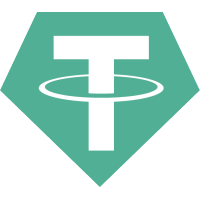 Tether is a controversial cryptocurrency with tokens issued by Tether Limited. It’s called a stable coin because it was originally designed to always be worth $1.00 with $1.00 in reserves for every tether spent. Tether Limited and the tether cryptocurrency are shrouded in controversy due to the company’s alleged role in manipulating the bitcoin price, unclear relations with the Bitfinex exchange, apparent lack of long-term banking relationships, and the lack of a promised audit by the company.
Tether is a controversial cryptocurrency with tokens issued by Tether Limited. It’s called a stable coin because it was originally designed to always be worth $1.00 with $1.00 in reserves for every tether spent. Tether Limited and the tether cryptocurrency are shrouded in controversy due to the company’s alleged role in manipulating the bitcoin price, unclear relations with the Bitfinex exchange, apparent lack of long-term banking relationships, and the lack of a promised audit by the company.
Price: $1.00
Market cap: $40 535 467 568
3. Binance Coin (BNB)
 Binance Coin is closely related to the largest cryptocurrency exchange, Binance. Thanks to BNB, you can take advantage of transaction discounts, decide on further development, and invest in new projects. In less than two years of operation, an unknown exchange has become one of the largest cryptocurrency trading platforms in the world. The idea of the cryptocurrency exchange was born in 2017. The main originator was Changpeng Zhao. BNB tokens are based on the ERC20 standard designed by ethereum.
Binance Coin is closely related to the largest cryptocurrency exchange, Binance. Thanks to BNB, you can take advantage of transaction discounts, decide on further development, and invest in new projects. In less than two years of operation, an unknown exchange has become one of the largest cryptocurrency trading platforms in the world. The idea of the cryptocurrency exchange was born in 2017. The main originator was Changpeng Zhao. BNB tokens are based on the ERC20 standard designed by ethereum.
Price: $297.54
Market cap: $40 232 494 104
4. Cardano (ADA)
 This cryptocurrency made its debut and was launched in 2017 after an ICO fundraiser that has been going on since 2015. Charles Hoskinson is the creator of the project, which quickly gained interest also outside of Asia. This cryptocurrency impresses with a well-thought-out plan for further development, users have access to information on what the organizations supervising the Cardano platform are currently working on. It must be admitted that the progress of work done in the area of the platform is very impressive. Many respected scientists work on the project. At the moment, it is one of the most professional and refined cryptocurrency platforms.
This cryptocurrency made its debut and was launched in 2017 after an ICO fundraiser that has been going on since 2015. Charles Hoskinson is the creator of the project, which quickly gained interest also outside of Asia. This cryptocurrency impresses with a well-thought-out plan for further development, users have access to information on what the organizations supervising the Cardano platform are currently working on. It must be admitted that the progress of work done in the area of the platform is very impressive. Many respected scientists work on the project. At the moment, it is one of the most professional and refined cryptocurrency platforms.
Price: $1.18
Market cap: $37 557 036 044
5. Polkadot (DOT)
 Polkadot is a blockchain protocol designed to support multiple chains within one network. Its goal is to eliminate the problem of current blockchains that operate in isolation and have little ability to communicate. The Polkadot protocol offers a secure environment for interchain computation and transmission. This in turn opens up a variety of possibilities for building and linking decentralized applications, services and networks. The project is being developed by Parity Technologies, under the leadership of Gavin Wood and Jutta Steiner – two former Ethereum executives. Polkadot is a promising project. Considering that many app developers are looking for ways to reach a wider audience and that there are many different blockchains out there, the platform can be useful to many people. The position in the DOT token rankings is also beneficial for the project’s reputation.
Polkadot is a blockchain protocol designed to support multiple chains within one network. Its goal is to eliminate the problem of current blockchains that operate in isolation and have little ability to communicate. The Polkadot protocol offers a secure environment for interchain computation and transmission. This in turn opens up a variety of possibilities for building and linking decentralized applications, services and networks. The project is being developed by Parity Technologies, under the leadership of Gavin Wood and Jutta Steiner – two former Ethereum executives. Polkadot is a promising project. Considering that many app developers are looking for ways to reach a wider audience and that there are many different blockchains out there, the platform can be useful to many people. The position in the DOT token rankings is also beneficial for the project’s reputation.
Price: $36.68
Market cap: $29 200 985 872
6. Ripple (XRP)
 In many ways, the Ripple cryptocurrency is very different from the rest. It is a centralized project aimed at traditional financial institutions. The innovative model of transaction execution attracted the interest of banks that are willing to engage in the development of this project. There are good chances that in the future the Ripple cryptocurrency will be integrated with the banking system, constituting an alternative to the SWIFT platform used today. The idea of the platform was born many years before Bitcoin. Already in 2004, Canadian developer Ryan Fugger designed the first model of an innovative transactional network. A working version appeared in 2005 under the name Ripple Pay. As mentioned, the goal was to create a space for instant transactions in real time.
In many ways, the Ripple cryptocurrency is very different from the rest. It is a centralized project aimed at traditional financial institutions. The innovative model of transaction execution attracted the interest of banks that are willing to engage in the development of this project. There are good chances that in the future the Ripple cryptocurrency will be integrated with the banking system, constituting an alternative to the SWIFT platform used today. The idea of the platform was born many years before Bitcoin. Already in 2004, Canadian developer Ryan Fugger designed the first model of an innovative transactional network. A working version appeared in 2005 under the name Ripple Pay. As mentioned, the goal was to create a space for instant transactions in real time.
Price: $0.55
Market cap: $25 791 456 699
7. Theta (THETA)
 Theta is a decentralized video delivery network, powered by users and an innovative new blockchain. DSN and Theta protocol address various challenges facing the video streaming industry today. First, Theta tokens are used as an incentive to encourage individual users to share redundant memory resources and bandwidth as cache nodes for video streams. This improves stream delivery quality and solves the last mile delivery problem, a major bottleneck in traditional stream delivery pipelines, especially for high definition, high bit rate virtual reality (VR) streams.
Theta is a decentralized video delivery network, powered by users and an innovative new blockchain. DSN and Theta protocol address various challenges facing the video streaming industry today. First, Theta tokens are used as an incentive to encourage individual users to share redundant memory resources and bandwidth as cache nodes for video streams. This improves stream delivery quality and solves the last mile delivery problem, a major bottleneck in traditional stream delivery pipelines, especially for high definition, high bit rate virtual reality (VR) streams.
Price: $12.14
Market cap: $13 496 491 690
8. Litecoin (LTC)
 The project was born in 2011, and its originator and main developer is Charlie Lee. LTC is the second altcoin in history and was created a few months later after the first altcoin, Namecoin (NMC). The users themselves, who play the role of classic miners, have a great influence on the development of this network. The project is based on the Proof of Work consensus algorithm. Users are responsible for carrying out transactions, and they provide their computing power in return for remuneration.
The project was born in 2011, and its originator and main developer is Charlie Lee. LTC is the second altcoin in history and was created a few months later after the first altcoin, Namecoin (NMC). The users themselves, who play the role of classic miners, have a great influence on the development of this network. The project is based on the Proof of Work consensus algorithm. Users are responsible for carrying out transactions, and they provide their computing power in return for remuneration.
Price: $190.11
Market cap: $13 139 999 893
9. Chainlink (LINK)
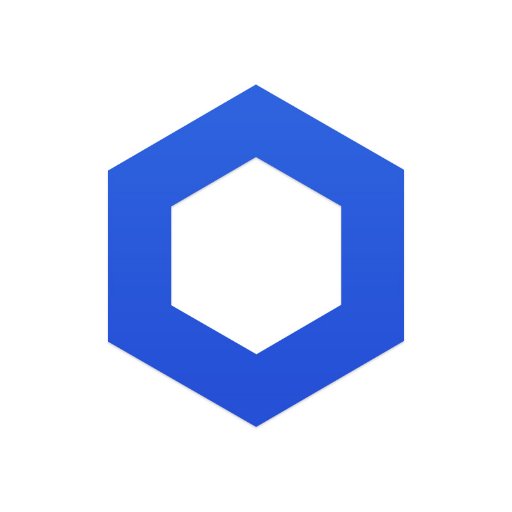 The originator of the project is Sergey Nazarov, who in 2014 launched the Smart Contracts start-up registered in San Francisco. ChainLink, in turn, is the name of the company, platforms and cryptocurrencies that are owned by Smart Contracts. ChainLink cryptocurrency aims to popularize payments with virtual currencies so that they are available almost everywhere. To this end, the company is working on integrating the platform with external payment networks.
The originator of the project is Sergey Nazarov, who in 2014 launched the Smart Contracts start-up registered in San Francisco. ChainLink, in turn, is the name of the company, platforms and cryptocurrencies that are owned by Smart Contracts. ChainLink cryptocurrency aims to popularize payments with virtual currencies so that they are available almost everywhere. To this end, the company is working on integrating the platform with external payment networks.
Price: $27.08
Market cap: $10 569 468 948
10. Stellar (XLM)
 The Stellar cryptocurrency is one of the largest, decentralized networks enabling quick payments, as well as tokenization of financial instruments and carrying out ICO collections. It was founded in 2013 by the creator Jed McCaleb and the team.
The creators are inspired by the idea of creating a specific financial system that will also be used in countries with limited access to banks. The project is supported by corporations and it is certainly worth following its further actions.
The Stellar cryptocurrency is one of the largest, decentralized networks enabling quick payments, as well as tokenization of financial instruments and carrying out ICO collections. It was founded in 2013 by the creator Jed McCaleb and the team.
The creators are inspired by the idea of creating a specific financial system that will also be used in countries with limited access to banks. The project is supported by corporations and it is certainly worth following its further actions.
Price: $0.39
Market cap: $9 146 966 236
11. Terra (LUNA)
 Terra (LUNA) first entered the market in January 2018. The founders of the network, Daniel Shin and Do Kwon, sought to create a new type of “smart money” that could reflect the flexible nature of the digital economy. Kwon is currently the CEO of Terraform Labs. A project that was created from the beginning to meet a real need. The idea was to create an open and transparent ecommerce billing platform. Based on a scalable and cheap to use blockchain, so that transactions made through it are cheaper than those carried out with credit cards, paypal or other traditional online payment methods.
Terra (LUNA) first entered the market in January 2018. The founders of the network, Daniel Shin and Do Kwon, sought to create a new type of “smart money” that could reflect the flexible nature of the digital economy. Kwon is currently the CEO of Terraform Labs. A project that was created from the beginning to meet a real need. The idea was to create an open and transparent ecommerce billing platform. Based on a scalable and cheap to use blockchain, so that transactions made through it are cheaper than those carried out with credit cards, paypal or other traditional online payment methods.
Price: $18.43
Market cap: $7 336 838 686
12. Dogecoin (DOGE)
 Dogecoin was founded by Billy Markus and Jackson Palmer. Both of these people worked in the tech sector before Dogecoin. Markus was a software engineer at IBM, and Palmer worked for Adobe as a developer. The Dogecoin cryptocurrency uses the Proof of Work consensus algorithm to ensure network security. However, this PoW system is not the same version of SHA-256 used by Bitcoin. Instead, the network relies on scrypt technology in its PoW mechanism. This decision was made to prevent the use of high-powered bitcoin mining platforms. You can only mine Dogecoin with dedicated FPGA and ASIC devices.
Dogecoin was founded by Billy Markus and Jackson Palmer. Both of these people worked in the tech sector before Dogecoin. Markus was a software engineer at IBM, and Palmer worked for Adobe as a developer. The Dogecoin cryptocurrency uses the Proof of Work consensus algorithm to ensure network security. However, this PoW system is not the same version of SHA-256 used by Bitcoin. Instead, the network relies on scrypt technology in its PoW mechanism. This decision was made to prevent the use of high-powered bitcoin mining platforms. You can only mine Dogecoin with dedicated FPGA and ASIC devices.
Price: $0.05
Market cap: $7 013 956 280
13. Wrapped Bitcoin (wBTC)
 WBTC is a new innovation that successfully transfers BTC to the Ethereum blockchain. This unique financial instrument provides traders, institutions and Dapps a bridge to the Ethereum network while maintaining exposure to Bitcoin. Via a WBTC partner 1 Bitcoin can be converted into 1 Wrapped Bitcoin and vice versa. The WBTC was created to allow Bitcoin holders to participate in the decentralized financial applications (“DeFi”) that are popular on Ethereum. The wBTC concept is quite safe as the technology is solid. Another point worth mentioning is centralization. Whenever you engage third party custodians who hold large amounts of Bitcoin, mint new tokens, and monitor the value of Bitcoin collateral, you have a market ripe for a concentration of power
WBTC is a new innovation that successfully transfers BTC to the Ethereum blockchain. This unique financial instrument provides traders, institutions and Dapps a bridge to the Ethereum network while maintaining exposure to Bitcoin. Via a WBTC partner 1 Bitcoin can be converted into 1 Wrapped Bitcoin and vice versa. The WBTC was created to allow Bitcoin holders to participate in the decentralized financial applications (“DeFi”) that are popular on Ethereum. The wBTC concept is quite safe as the technology is solid. Another point worth mentioning is centralization. Whenever you engage third party custodians who hold large amounts of Bitcoin, mint new tokens, and monitor the value of Bitcoin collateral, you have a market ripe for a concentration of power
Price: $57775.16
Market cap: $6 598 401 464
14. Uniswap (UNI)
 The history of Uniswap (UNI) begins in 2016. At that time, the founder of Ethereum, Vitalik Buterin, proposed the concept of a decentralized, automated market maker. It was only a year before another well-known cryptocurrency developer took up this project. Hayden Adams realized this concept with the help of the ETH community (received various grants, including $ 100,000 from the Ethereum Foundation). Uniswap was built to solve some of the toughest problems facing the market. Its decentralized nature helps eliminate the power and control accumulated by major exchanges such as Binance and Coinbase.
The history of Uniswap (UNI) begins in 2016. At that time, the founder of Ethereum, Vitalik Buterin, proposed the concept of a decentralized, automated market maker. It was only a year before another well-known cryptocurrency developer took up this project. Hayden Adams realized this concept with the help of the ETH community (received various grants, including $ 100,000 from the Ethereum Foundation). Uniswap was built to solve some of the toughest problems facing the market. Its decentralized nature helps eliminate the power and control accumulated by major exchanges such as Binance and Coinbase.
Price: $27.69
Market cap: $6 089 049 207
15. VeChain (VET)
 VeChain came into reality in 2015 with the goal of disrupting supply by making data useful and transparent. Project creator Sunny Lu before this endeavor was best known for his work with Louis Vuitton China. You have to imagine that dealing with all the supply chain issues faced by garment manufacturers inspired him to develop this unique system. VeChain VET started on the Ethereum blockchain. This approach is a common strategy in the marketplace as it allows developers to present their concept and raise funds to develop their own blockchain. Ultimately, that’s exactly what VeChain did. Currently, VET operates in the native VeChain ecosystem. In this way, developers can provide functions intended directly for business customers.
VeChain came into reality in 2015 with the goal of disrupting supply by making data useful and transparent. Project creator Sunny Lu before this endeavor was best known for his work with Louis Vuitton China. You have to imagine that dealing with all the supply chain issues faced by garment manufacturers inspired him to develop this unique system. VeChain VET started on the Ethereum blockchain. This approach is a common strategy in the marketplace as it allows developers to present their concept and raise funds to develop their own blockchain. Ultimately, that’s exactly what VeChain did. Currently, VET operates in the native VeChain ecosystem. In this way, developers can provide functions intended directly for business customers.
Price: $0.09
Market cap: $5 873 791 791
16. Cosmos (ATOM)
 The ATOM cryptocurrency is a project that aims to find a way to integrate many independent networks. The project was born in 2016, and its first edition started at the end of 2017. The developers noticed the problem of the rapidly developing world of blockchain, which is still poorly integrated. The Cosmos cryptocurrency uses a combination of numerous programming functions. Developers operating within this network can create decentralized applications in several languages: Java, C ++ and Solidity.
The ATOM cryptocurrency is a project that aims to find a way to integrate many independent networks. The project was born in 2016, and its first edition started at the end of 2017. The developers noticed the problem of the rapidly developing world of blockchain, which is still poorly integrated. The Cosmos cryptocurrency uses a combination of numerous programming functions. Developers operating within this network can create decentralized applications in several languages: Java, C ++ and Solidity.
Price: $18.85
Market cap: $5 332 715 218
17. Kusama (KSM)
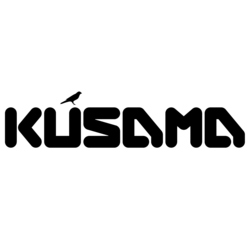 Kusama was founded in 2016 by the creators of Polkadot, Gavin Wood, Peter Czaban and Robert Habermeier. Kusama is a public pre-production environment for Polkadot that allows any developer to experiment and test new blockchains or applications before making them available on this network. Thus, it can be said that Kusama acts as a kind of sandbox for developers who want to test early versions of Polkadot projects but with real cryptocurrency traded on the open market. A potential advantage of starting a project on Kusama is that it allows Polkadot projects to build a user base and gain traction in the community before the official launch.
Kusama was founded in 2016 by the creators of Polkadot, Gavin Wood, Peter Czaban and Robert Habermeier. Kusama is a public pre-production environment for Polkadot that allows any developer to experiment and test new blockchains or applications before making them available on this network. Thus, it can be said that Kusama acts as a kind of sandbox for developers who want to test early versions of Polkadot projects but with real cryptocurrency traded on the open market. A potential advantage of starting a project on Kusama is that it allows Polkadot projects to build a user base and gain traction in the community before the official launch.
Price: $520.72
Market cap: $4 760 945 615
18. TRON (TRX)
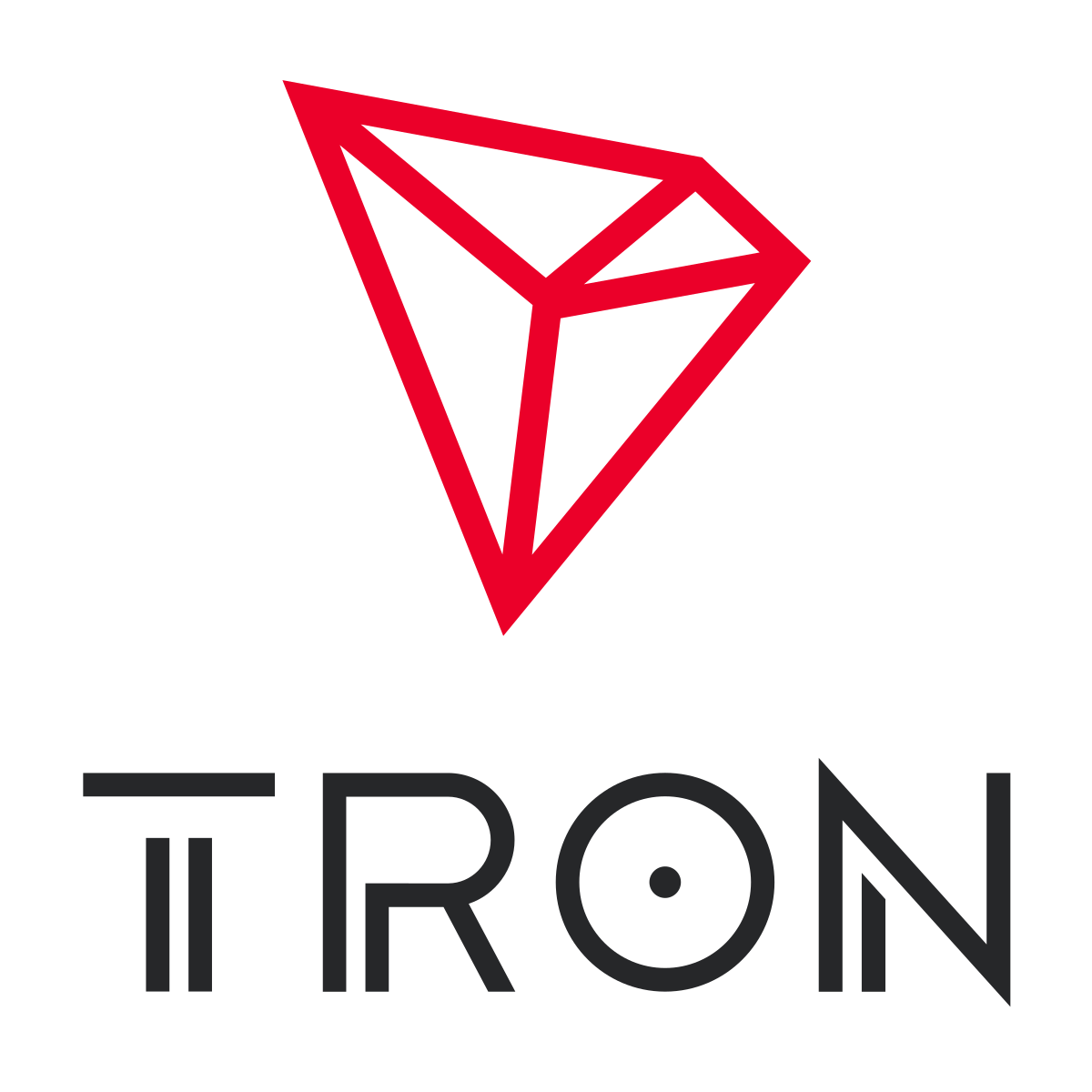 Tron cryptocurrency is a decentralized platform that offers users unfettered access to entertainment without any restrictions or censorship. The project is very controversial and in its assumptions is similar to the idea of deep web. Coin TRX is the main means of payment for the services offered by the platform.
The originator and creator is Justin Sun. This figure is well known in the Internet industry. He is the owner of the Chinese messenger PEIWO, and in the past he was one of the developers managing the development of Ripple. 2017 is given as the creation date of TRX, the project’s white paper appeared on the web at the beginning of 2018. Soon after, we saw the publication of a platform that does not yet function as the promised entertainment platform.
Tron cryptocurrency is a decentralized platform that offers users unfettered access to entertainment without any restrictions or censorship. The project is very controversial and in its assumptions is similar to the idea of deep web. Coin TRX is the main means of payment for the services offered by the platform.
The originator and creator is Justin Sun. This figure is well known in the Internet industry. He is the owner of the Chinese messenger PEIWO, and in the past he was one of the developers managing the development of Ripple. 2017 is given as the creation date of TRX, the project’s white paper appeared on the web at the beginning of 2018. Soon after, we saw the publication of a platform that does not yet function as the promised entertainment platform.
Price: $0.07
Market cap: $4 669 457 929
19. HEX (HEX)
 Hex has developed a unique payment method where it pays cryptocurrency holders rather than miners. This system works to reward those who keep their Hex assets for a long time. Instead of keeping Hex in your wallet when it depreciates due to inflation, Hex provides a new way to earn money by ‘staking’ tokens. Staking is a form of blocking tokens for a predetermined period of time, and the longer you block, the more you earn. The platform is safe and protects against common malicious threats that plague other cryptocurrencies. Designed and launched by Richard Heart on 2 December 2019, HEX describes itself as a Certificate of Deposit on the blockchain.
Hex has developed a unique payment method where it pays cryptocurrency holders rather than miners. This system works to reward those who keep their Hex assets for a long time. Instead of keeping Hex in your wallet when it depreciates due to inflation, Hex provides a new way to earn money by ‘staking’ tokens. Staking is a form of blocking tokens for a predetermined period of time, and the longer you block, the more you earn. The platform is safe and protects against common malicious threats that plague other cryptocurrencies. Designed and launched by Richard Heart on 2 December 2019, HEX describes itself as a Certificate of Deposit on the blockchain.
Price: $0.02
Market cap: $4 445 324 116
20. Monero (XMR)
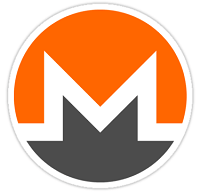 It was established in April 2014. The idea for the name was taken from Esperanto, according to which it means money. The monero cryptocurrency ensures its users the anonymity of their transactions. At the same time, it is highly decentralized. The algorithm protects both the information about the sending of funds and their receipt. This makes the transactions virtually untraceable. The Monero cryptocurrency is perfect for online purchases and long-term storage of funds.
It was established in April 2014. The idea for the name was taken from Esperanto, according to which it means money. The monero cryptocurrency ensures its users the anonymity of their transactions. At the same time, it is highly decentralized. The algorithm protects both the information about the sending of funds and their receipt. This makes the transactions virtually untraceable. The Monero cryptocurrency is perfect for online purchases and long-term storage of funds.
Price: $258.23
Market cap: $4 238 147 980
21. IOTA (MIOTA)
 The IOTA ledger was created in 2015 by David Sønstebø, Dominik Schiener, Sergey Ivancheglo, and Serguei Popov. IOTA is an open-source distributed ledger and cryptocurrency designed for the Internet of things (IoT). IOTA does not use miners to validate transactions, instead, users that issue a new transaction must approve two previous transactions and perform a small amount of proof of work. Transactions can therefore be issued without fees, facilitating microtransactions.
The IOTA ledger was created in 2015 by David Sønstebø, Dominik Schiener, Sergey Ivancheglo, and Serguei Popov. IOTA is an open-source distributed ledger and cryptocurrency designed for the Internet of things (IoT). IOTA does not use miners to validate transactions, instead, users that issue a new transaction must approve two previous transactions and perform a small amount of proof of work. Transactions can therefore be issued without fees, facilitating microtransactions.
Price: $1.46
Market cap: $4 133 124 201
22. EOS.IO (EOS)
 EOS is a blockchain-based open-source software released on June 1, 2018. The history of EOS begins in 2017 with the issuance of the company’s whitepaper. This token is a native cryptocurrency of the EOS network. It has backing from a company known as Block. You cannot mine EOS like Bitcoin or Litecoin. The tokens are generated by block producers who generate a required number of blocks and get rewarded for each new block that is produced.
EOS is a blockchain-based open-source software released on June 1, 2018. The history of EOS begins in 2017 with the issuance of the company’s whitepaper. This token is a native cryptocurrency of the EOS network. It has backing from a company known as Block. You cannot mine EOS like Bitcoin or Litecoin. The tokens are generated by block producers who generate a required number of blocks and get rewarded for each new block that is produced.
Price: $4.19
Market cap: $4 062 906 828
23. OKB (OKB)
 OKB is a token launched by the second most popular cryptocurrency exchange in terms of trading volume. According to OKEx, the company has officially released OKB on the ERC20 protocol. OKB is the native token of the exchange and is issued by the OK Blockchain Foundation, adopted by OKEx as its global utility token. OKB holders can enjoy several benefits from discounted fees and voting rights to rewards and giveaways. OKEx has its own wallet for storing OKB. However, OKB can also be stored in any ERC20-compatible cryptocurrency wallet until it moves onto its own chain, including MyEtherWallet, Trust Wallet, and hardware wallets from Ledger, Trezor, and Archos.
OKB is a token launched by the second most popular cryptocurrency exchange in terms of trading volume. According to OKEx, the company has officially released OKB on the ERC20 protocol. OKB is the native token of the exchange and is issued by the OK Blockchain Foundation, adopted by OKEx as its global utility token. OKB holders can enjoy several benefits from discounted fees and voting rights to rewards and giveaways. OKEx has its own wallet for storing OKB. However, OKB can also be stored in any ERC20-compatible cryptocurrency wallet until it moves onto its own chain, including MyEtherWallet, Trust Wallet, and hardware wallets from Ledger, Trezor, and Archos.
Price: $15.85
Market cap: $3 976 995 961
24. Aave (AAVE)
 Aave is an Ethereum-based P2P lending system that brings several new features to the market. Since its introduction, Aave developers have made every effort to make their network accessible to all. This next-generation protocol was one of the first to allow users to borrow, borrow and earn interest on crypto assets. Aave entered the market in 2017.
Aave is an Ethereum-based P2P lending system that brings several new features to the market. Since its introduction, Aave developers have made every effort to make their network accessible to all. This next-generation protocol was one of the first to allow users to borrow, borrow and earn interest on crypto assets. Aave entered the market in 2017.
Price: $368.37
Market cap: $3 812 342 946
25. BitTorrent (BTT)
 BitTorrent was originally invented by Bram Cohen. BTT is a TRC-10 blockchain utility token that supports the functions of the world’s most popular decentralized protocols and applications. BitTorrent enables content creators to connect with their audience, earn and spend digital currency without intermediaries.
BitTorrent was originally invented by Bram Cohen. BTT is a TRC-10 blockchain utility token that supports the functions of the world’s most popular decentralized protocols and applications. BitTorrent enables content creators to connect with their audience, earn and spend digital currency without intermediaries.
Price: $0.01
Market cap: $3 734 242 934
26. Crypto.com Coin (CRO)
 The CRO coin is a token for the Crypto.com platform. It has 3 main functions: trading, payments and financial services. CRO coin holders will enjoy benefits such as reduced fees, higher loan earnings, and priority services. Cardholders holding a CRO will also be eligible for additional benefits.
The CRO coin is a token for the Crypto.com platform. It has 3 main functions: trading, payments and financial services. CRO coin holders will enjoy benefits such as reduced fees, higher loan earnings, and priority services. Cardholders holding a CRO will also be eligible for additional benefits.
Price: $0.20
Market cap: $3 674 622 020
27. FTX Token (FTT)
 FTT is the native cryptocurrency token of the crypto derivatives trading platform FTX that launched on May 8, 2019. The FTX Token or FTT was founded by Sam Bankman-Fried and Gary Wang. The FTX Token is the backbone of the FTX ecosystem, which was designed to increase network effects and demand for FTT as well as decrease its circulating supply. Holders receive a fraction of the stock exchange fees, a fraction of the liquidation insurance fund, and can use the token as collateral and get total OTC spreads on FTX.
FTT is the native cryptocurrency token of the crypto derivatives trading platform FTX that launched on May 8, 2019. The FTX Token or FTT was founded by Sam Bankman-Fried and Gary Wang. The FTX Token is the backbone of the FTX ecosystem, which was designed to increase network effects and demand for FTT as well as decrease its circulating supply. Holders receive a fraction of the stock exchange fees, a fraction of the liquidation insurance fund, and can use the token as collateral and get total OTC spreads on FTX.
Price: $39.15
Market cap: $3 604 871 845
28. Tezos (XTZ)
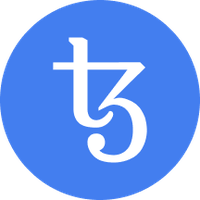 The Tezos cryptocurrency is a decentralized blockchain network that seeks to create the first self-amending crypto ledger ecosystem. To put it simply, the platform is supposed to self-correct its source code and eliminate the errors it has noticed. The originators of the Tezos platform and cryptocurrencies are Arthur and Kathleen Breitman. The couple founded the company Dynamic Ledger Solutions, which is responsible for the creation and further development of the source code. The Tezos cryptocurrency is an extensive transaction platform that allows you to make fast and secure payments via XTZ tokens. It is also a convenient ecosystem for creating decentralized applications and concluding smart contracts.
The Tezos cryptocurrency is a decentralized blockchain network that seeks to create the first self-amending crypto ledger ecosystem. To put it simply, the platform is supposed to self-correct its source code and eliminate the errors it has noticed. The originators of the Tezos platform and cryptocurrencies are Arthur and Kathleen Breitman. The couple founded the company Dynamic Ledger Solutions, which is responsible for the creation and further development of the source code. The Tezos cryptocurrency is an extensive transaction platform that allows you to make fast and secure payments via XTZ tokens. It is also a convenient ecosystem for creating decentralized applications and concluding smart contracts.
Price: $4.42
Market cap: $3 308 981 548
29. NEM (XEM)
 The NEM cryptocurrency is another important project developed in Blockchain technology. The creators set themselves extremely ambitious goals. They are guided by the idea of New Economy Movement, which assumes the creation of new foundations and foundations based on the principles of decentralization, equality and financial independence of users. In early 2014, the UtopianFuture user presented his idea and attracted the interest of many other developers who decided to get involved in the project. To this day, we do not know the identity of most of the people working in the development of the XEM platform. The Nem (New Economy Movement) cryptocurrency resembles Bitcoin in many respects. It is a decentralized transactional network that allows convenient payments.
The NEM cryptocurrency is another important project developed in Blockchain technology. The creators set themselves extremely ambitious goals. They are guided by the idea of New Economy Movement, which assumes the creation of new foundations and foundations based on the principles of decentralization, equality and financial independence of users. In early 2014, the UtopianFuture user presented his idea and attracted the interest of many other developers who decided to get involved in the project. To this day, we do not know the identity of most of the people working in the development of the XEM platform. The Nem (New Economy Movement) cryptocurrency resembles Bitcoin in many respects. It is a decentralized transactional network that allows convenient payments.
Price: $0.36
Market cap: $3 273 703 469
30. NEO (NEO)
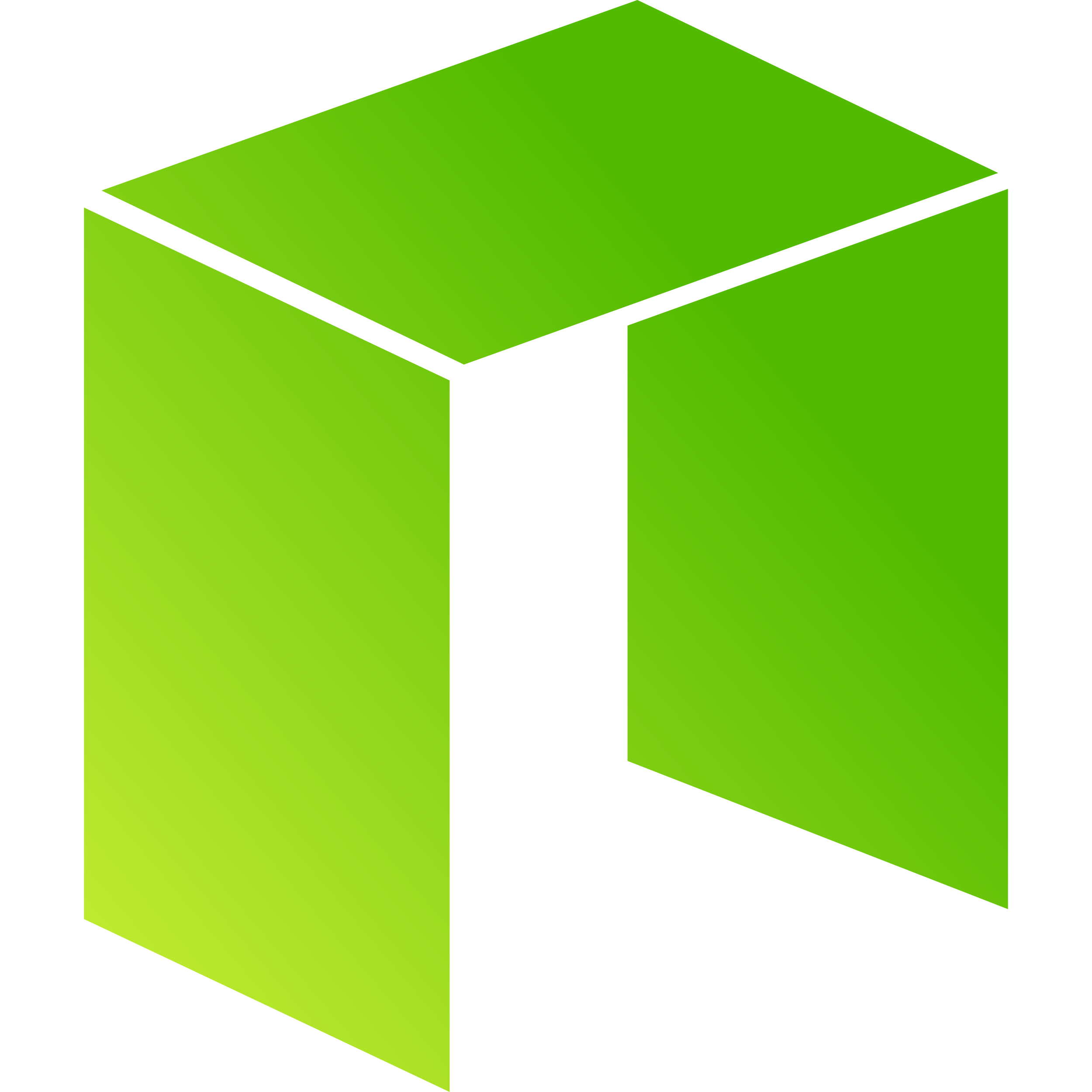 The Neo cryptocurrency is a developer-friendly ecosystem that enables the creation of decentralized applications and smart contracts. Unlike many others, the coin is indivisible, which is to make it similar to exchange-traded financial instruments. The white paper was published in 2014 in China. Initially, the Neo cryptocurrency operated under the name AntShares and was called the Chinese Ethereum because of its many similarities. It was not until June 22, 2017 that the rebranding was carried out, in which the AntShares brand was transformed into Neo. The abbreviation comes from the term New Economic Order. Neo cryptocurrency is not used to make quick payments. Coin is indivisible into smaller units and therefore its use in everyday payments is cumbersome. On the other hand, owners can invest in new applications and smart contracts created by developers within the network.
The Neo cryptocurrency is a developer-friendly ecosystem that enables the creation of decentralized applications and smart contracts. Unlike many others, the coin is indivisible, which is to make it similar to exchange-traded financial instruments. The white paper was published in 2014 in China. Initially, the Neo cryptocurrency operated under the name AntShares and was called the Chinese Ethereum because of its many similarities. It was not until June 22, 2017 that the rebranding was carried out, in which the AntShares brand was transformed into Neo. The abbreviation comes from the term New Economic Order. Neo cryptocurrency is not used to make quick payments. Coin is indivisible into smaller units and therefore its use in everyday payments is cumbersome. On the other hand, owners can invest in new applications and smart contracts created by developers within the network.
Price: $44.58
Market cap: $3 241 818 751
31. Huobi Token (HT)
 Huobi, the third largest cryptocurrency exchange in the world, recently announced and launched a new currency. Huobi Token (HT) rewards exchange users for their loyalty with reduced transaction fees, while passing its own value in tradable pairs against popular currencies. Huobi’s token launch follows in the footsteps of other loyalty-building tokens that launched other exchanges. The exchange launched the Huobi Token as part of an overall strategy to recover its user base following a tightening of Chinese regulations that severely restricted cryptocurrency trading.
Huobi, the third largest cryptocurrency exchange in the world, recently announced and launched a new currency. Huobi Token (HT) rewards exchange users for their loyalty with reduced transaction fees, while passing its own value in tradable pairs against popular currencies. Huobi’s token launch follows in the footsteps of other loyalty-building tokens that launched other exchanges. The exchange launched the Huobi Token as part of an overall strategy to recover its user base following a tightening of Chinese regulations that severely restricted cryptocurrency trading.
Price: $15.37
Market cap: $3 201 676 452
32. Dai (DAI)
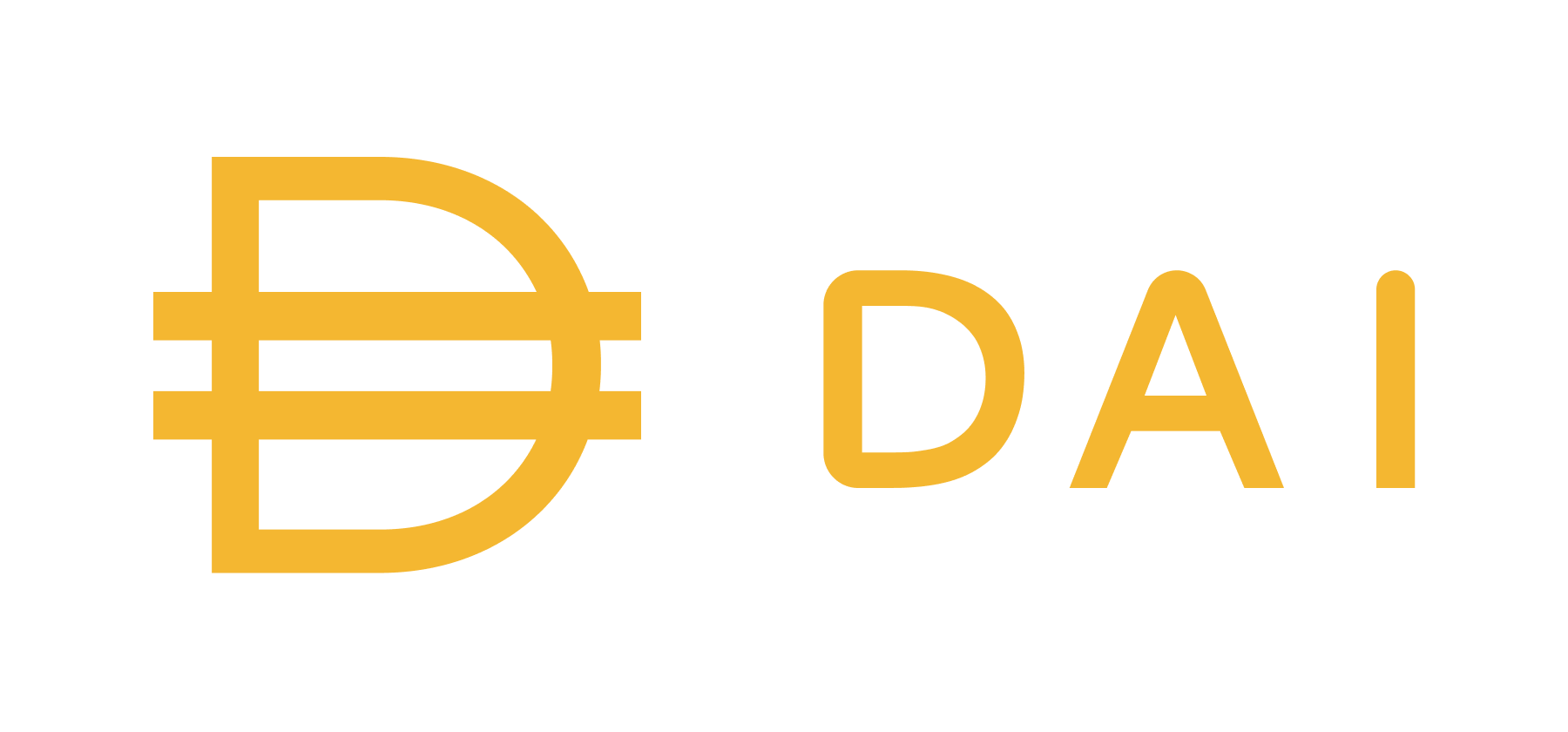 Dai is a native stablecoin for the Maker protocol. It is the world’s first cryptocurrency and decentralized stablecoin whose value is softly pegged to the US dollar. The secured supporting assets of Dai are other cryptocurrencies instead of fiat and are held under smart contracts rather than in institutions.
Dai is a native stablecoin for the Maker protocol. It is the world’s first cryptocurrency and decentralized stablecoin whose value is softly pegged to the US dollar. The secured supporting assets of Dai are other cryptocurrencies instead of fiat and are held under smart contracts rather than in institutions.
Price: $1.01
Market cap: $3 012 692 431
33. Filecoin (FIL)
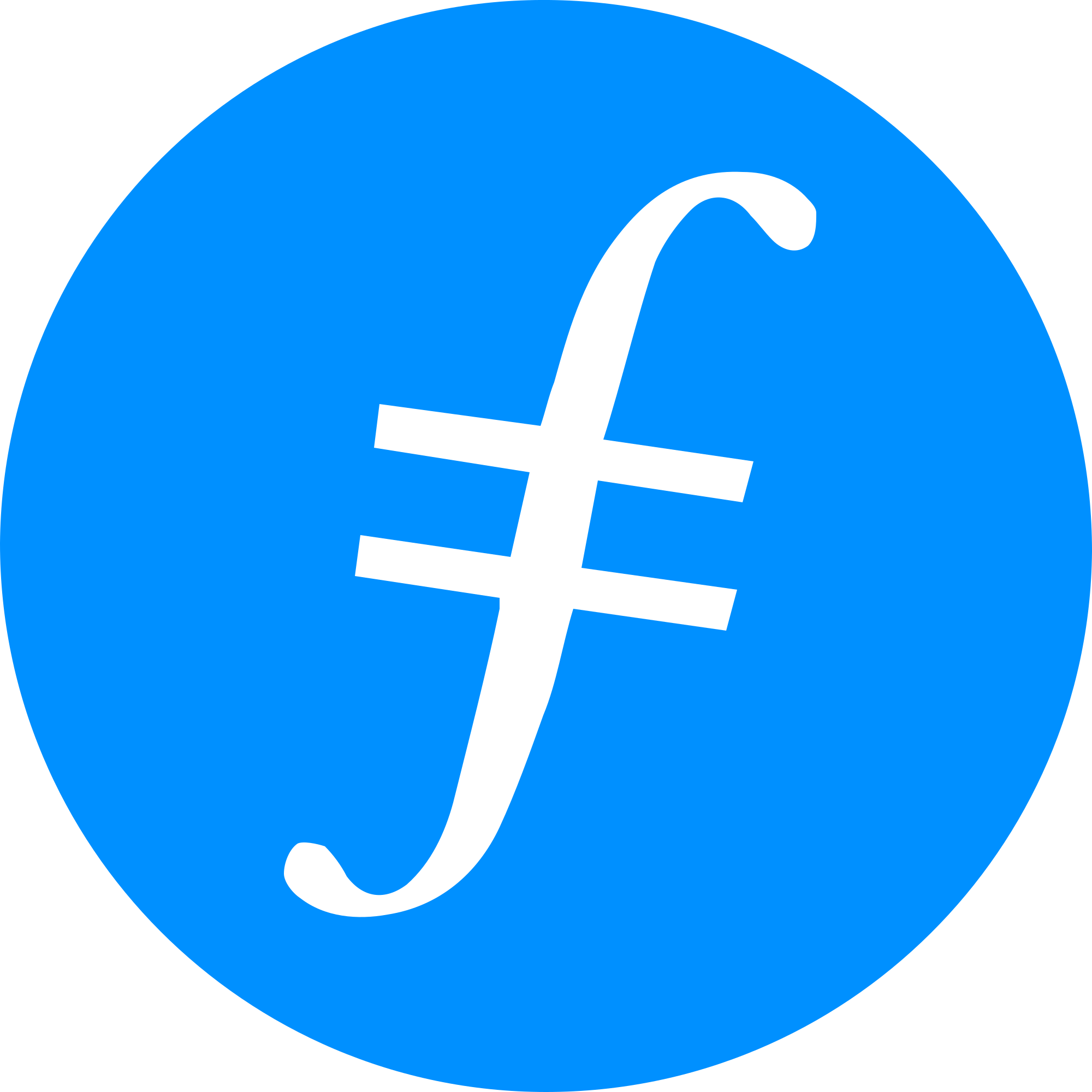 Filecoin is an open-source cloud storage marketplace, protocol, and cryptocurrency. The Filecoin network achieves stunning economies of scale, enabling anyone around the world to participate as a storage provider. It also makes your storage like a commodity or utility by separating your hard drive space from additional services. In this solid global market, the price of storage will be driven by supply and demand, not by corporate pricing departments, and miners will compete for factors such as reputation for reliability and price. The marketplace runs on blockchain with a native protocol token (also known as “Filecoin”) that miners earn by sharing storage with customers. Conversely, customers spend Filecoin by hiring miners to store or distribute the data.
Filecoin is an open-source cloud storage marketplace, protocol, and cryptocurrency. The Filecoin network achieves stunning economies of scale, enabling anyone around the world to participate as a storage provider. It also makes your storage like a commodity or utility by separating your hard drive space from additional services. In this solid global market, the price of storage will be driven by supply and demand, not by corporate pricing departments, and miners will compete for factors such as reputation for reliability and price. The marketplace runs on blockchain with a native protocol token (also known as “Filecoin”) that miners earn by sharing storage with customers. Conversely, customers spend Filecoin by hiring miners to store or distribute the data.
Price: $154.93
Market cap: $2 854 518 359
34. Content Value Network (CVNT)
 CVN Awareness Value Network adopts a fast and slow two-chain parallel mechanism and selects the miners working mode according to the content and priority of the generated data blocks. With the dual chain structure and dual core technologies, the CVN GPS value recognition network achieved a very high performance of 30,000 per second and a theoretical peak of 100,000. Not only has it have sufficient capacity, but can also provide privatized data storage and can greatly improve personal information. The space, read performance, and security of the storage in the chain provide the technical rationale for a decentralized network ecology of storage-driven CVN awareness and mining.
As Content Value Network is a currency with a relatively low total market value, there may be greater price fluctuations compared to cryptocurrencies that have been operating for a long time.
CVN Awareness Value Network adopts a fast and slow two-chain parallel mechanism and selects the miners working mode according to the content and priority of the generated data blocks. With the dual chain structure and dual core technologies, the CVN GPS value recognition network achieved a very high performance of 30,000 per second and a theoretical peak of 100,000. Not only has it have sufficient capacity, but can also provide privatized data storage and can greatly improve personal information. The space, read performance, and security of the storage in the chain provide the technical rationale for a decentralized network ecology of storage-driven CVN awareness and mining.
As Content Value Network is a currency with a relatively low total market value, there may be greater price fluctuations compared to cryptocurrencies that have been operating for a long time.
Price: $2.93
Market cap: $2 626 815 259
35. Chiliz (CHZ)
 Chiliz is a currency option for blockchain products and services targeting major consumers. The creators want to increase the involvement of fans and fans in entertainment and the functioning of clubs. Chiliz offers all the necessary tools for this.
The Socios.com platform allows to purchase fan tokens (tokens) from the largest and most renowned sports clubs, e.g. FC Barcelona, Paris Saint-Germain, AS Roma, which have a real impact on the fate and functioning of these teams, giving fans the opportunity to vote on matters important for these teams . Voting on the platform is possible thanks to the smart-contract system. As we are talking here about a leading project in this niche, which is still developing very dynamically, there is a high probability that Chiliz (CHZ) will be successful – at least when it comes to the sports industry
Chiliz is a currency option for blockchain products and services targeting major consumers. The creators want to increase the involvement of fans and fans in entertainment and the functioning of clubs. Chiliz offers all the necessary tools for this.
The Socios.com platform allows to purchase fan tokens (tokens) from the largest and most renowned sports clubs, e.g. FC Barcelona, Paris Saint-Germain, AS Roma, which have a real impact on the fate and functioning of these teams, giving fans the opportunity to vote on matters important for these teams . Voting on the platform is possible thanks to the smart-contract system. As we are talking here about a leading project in this niche, which is still developing very dynamically, there is a high probability that Chiliz (CHZ) will be successful – at least when it comes to the sports industry
Price: $0.50
Market cap: $2 517 631 107
36. Hedera Hashgraph (HBAR)
 HBAR is a utility token as well as the original token of the Hedera ecosystem. This currency is used to provide network services. Hedera Hashgraph is a publicly distributed ledger that supports decentralized applications that run on a web scale. The Hedera data will be logged on the DAG (Directed Acyclic Graph) and not on the chain as the current popular Blockchain platforms.
HBAR is a utility token as well as the original token of the Hedera ecosystem. This currency is used to provide network services. Hedera Hashgraph is a publicly distributed ledger that supports decentralized applications that run on a web scale. The Hedera data will be logged on the DAG (Directed Acyclic Graph) and not on the chain as the current popular Blockchain platforms.
Price: $0.36
Market cap: $2 437 518 019
37. Celsius (CEL)
 CEL is the ERC20 tool token that powers the Celsius Network credit ecosystem. CEL tools include the ability to become a member of the Celsius platform and community, the ability to deposit your cryptocurrencies in a Celsius wallet, the ability to apply for dollar loans with cryptocurrencies as collateral, and the ability to repay interest on these loans at a discount.
The company was founded in 2017 by Alex Mashinsky, who currently holds the position of CEO, and by Daniel Leon, who takes the position of COO in the company. Celsius Network is an interesting proposition for people who want to earn additional funds on their cryptocurrencies, the company responsible for Celsius is transparent and trustworthy, which is very important when providing financial services.
CEL is the ERC20 tool token that powers the Celsius Network credit ecosystem. CEL tools include the ability to become a member of the Celsius platform and community, the ability to deposit your cryptocurrencies in a Celsius wallet, the ability to apply for dollar loans with cryptocurrencies as collateral, and the ability to repay interest on these loans at a discount.
The company was founded in 2017 by Alex Mashinsky, who currently holds the position of CEO, and by Daniel Leon, who takes the position of COO in the company. Celsius Network is an interesting proposition for people who want to earn additional funds on their cryptocurrencies, the company responsible for Celsius is transparent and trustworthy, which is very important when providing financial services.
Price: $4.63
Market cap: $2 157 222 722
38. Dash (DASH)
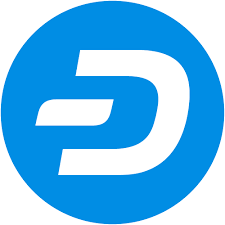 Dash is a cryptocurrency based on the work of a person or group of people disguised as Satoshi Nakamoto. It is also designed in such a way as to protect the privacy of its users. It is decentralized, anonymous, with the ability to make secure and instant transactions. It also has a two-tier peer-to-peer network that is financially motivated to deliver services to the entire Dash network. Dash provides instant transactions thanks to the Instant Send function and user privacy thanks to the Private Send function, which consists in mixing (mixing) coins and allows you to obtain anonymity of transactions. The privacy function is optional and limited to operations below 2000 DASH units. Thanks to this, Dash is recognized as one of the representatives of private coins, next to, among others, Monero and Zcash, although it should be remembered that DASH does not provide anonymity by default, but only offers such an optional feature.
Dash is a cryptocurrency based on the work of a person or group of people disguised as Satoshi Nakamoto. It is also designed in such a way as to protect the privacy of its users. It is decentralized, anonymous, with the ability to make secure and instant transactions. It also has a two-tier peer-to-peer network that is financially motivated to deliver services to the entire Dash network. Dash provides instant transactions thanks to the Instant Send function and user privacy thanks to the Private Send function, which consists in mixing (mixing) coins and allows you to obtain anonymity of transactions. The privacy function is optional and limited to operations below 2000 DASH units. Thanks to this, Dash is recognized as one of the representatives of private coins, next to, among others, Monero and Zcash, although it should be remembered that DASH does not provide anonymity by default, but only offers such an optional feature.
Price: $210.55
Market cap: $2 154 687 654
39. Decred (DRC)
![]() Decred allows users to seamlessly transition from one set of consensus rules to another. Decred uses an innovative Proof-of-Work (PoW) / Proof-of-stake (PoS) hybrid like Proof of Activity (PoA) to address this issue and gives users the ability to make currency decisions on a consensus rules plan for activation. This hybridized consensus system is used to create a balance between miners and users in order to create a more stable currency. Typically, the miners serving the infrastructure have a significant influence on the cryptocurrency, while its users have relatively little influence. Decred allows users to participate directly in the project without the need for expensive mining equipment.
Decred allows users to seamlessly transition from one set of consensus rules to another. Decred uses an innovative Proof-of-Work (PoW) / Proof-of-stake (PoS) hybrid like Proof of Activity (PoA) to address this issue and gives users the ability to make currency decisions on a consensus rules plan for activation. This hybridized consensus system is used to create a balance between miners and users in order to create a more stable currency. Typically, the miners serving the infrastructure have a significant influence on the cryptocurrency, while its users have relatively little influence. Decred allows users to participate directly in the project without the need for expensive mining equipment.
Price: $175.87
Market cap: $2 141 007 751
40. Unsus Sed Leo (LEO)
 UNUS SED LEO is based on the Ethereum [ETH] ERC20 standard. What hardly anyone knows also has a version for EOS [EOS]. The token can be moved from one network to another. The name of the project is translated from Latin as “the only, but the lion”. LEO Token was created primarily to fill the gap left by Bitfinex’s frozen funds in many countries.
UNUS SED LEO is based on the Ethereum [ETH] ERC20 standard. What hardly anyone knows also has a version for EOS [EOS]. The token can be moved from one network to another. The name of the project is translated from Latin as “the only, but the lion”. LEO Token was created primarily to fill the gap left by Bitfinex’s frozen funds in many countries.
Price: $2.08
Market cap: $2 115 386 490
41. Maker (MKR)
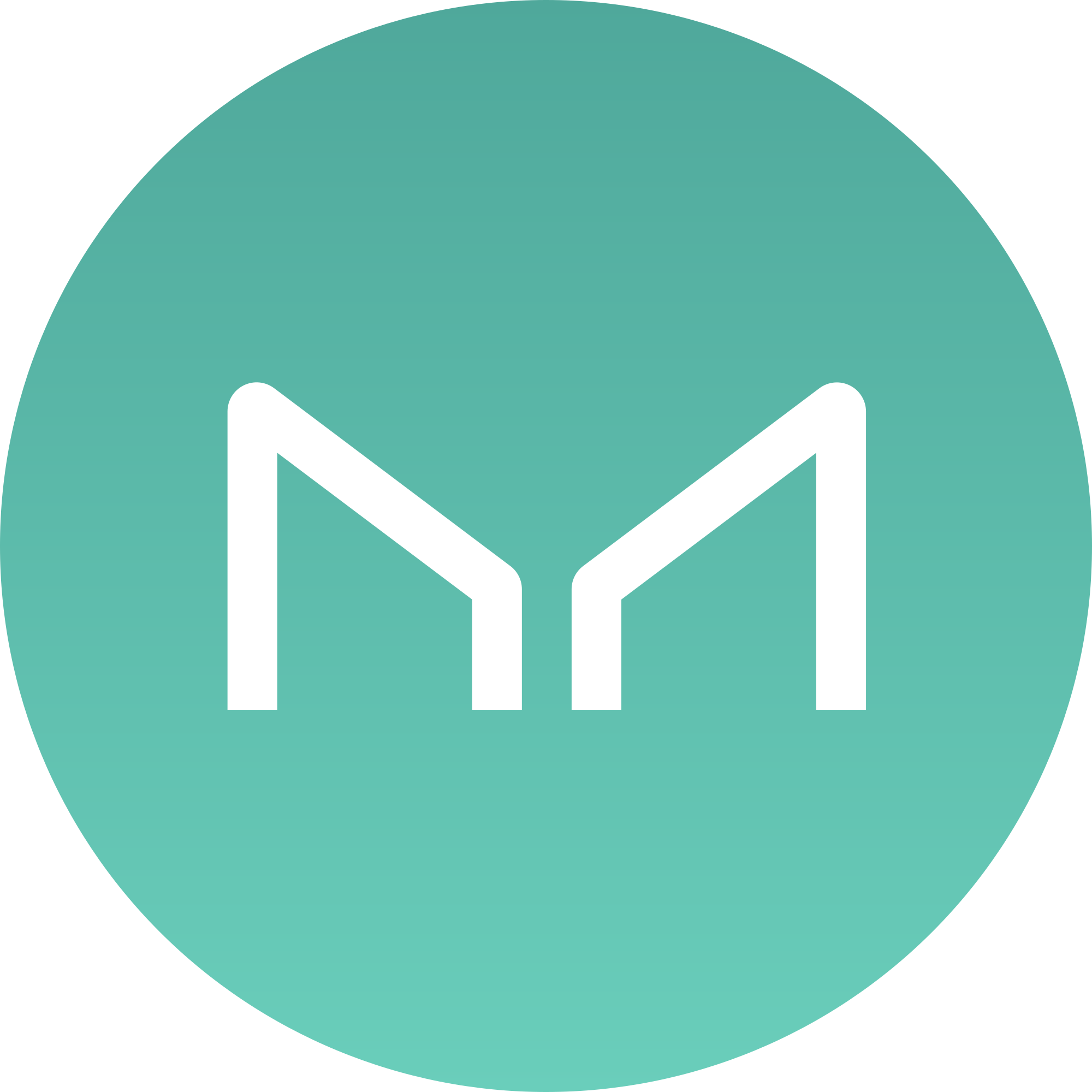 Maker is a smart contract platform on Ethereum that supports and stabilizes the value of Dai through a dynamic Collateralized Debt Positions (CDP) system, independent feedback mechanisms and properly motivated external users. Dai Stablecoin is a security backed cryptocurrency whose value is stable against the US dollar. Stable digital assets such as Dai Stablecoin are essential to fully exploit the potential of blockchain technology.
Maker cryptocurrency allows users to generate Dai on Maker platform using Ethereum resources. The Dai function is very similar to most cryptocurrencies – it has the ability to transfer freely, you can use it to pay for goods and services or store savings. Interestingly, generating Dai allows you to build the components required to create a decentralized margin trading platform.
Maker is a smart contract platform on Ethereum that supports and stabilizes the value of Dai through a dynamic Collateralized Debt Positions (CDP) system, independent feedback mechanisms and properly motivated external users. Dai Stablecoin is a security backed cryptocurrency whose value is stable against the US dollar. Stable digital assets such as Dai Stablecoin are essential to fully exploit the potential of blockchain technology.
Maker cryptocurrency allows users to generate Dai on Maker platform using Ethereum resources. The Dai function is very similar to most cryptocurrencies – it has the ability to transfer freely, you can use it to pay for goods and services or store savings. Interestingly, generating Dai allows you to build the components required to create a decentralized margin trading platform.
Price: $2056.59
Market cap: $2 097 300 259
42. Enjin Coin (ENJ)
 Enjin Coin (ENJ) is the utility token of the social networking platform Enjin, based on the Ethereum (ETH) blockchain network. Its task is to introduce the token economy, allowing developers to monetize their games and content, and users to acquire specific functionalities, receive remuneration for progress in the form of tokens, as well as create and obtain digital collectibles (so-called items, game skins, etc. ). Blockchain in the dynamically developing gaming industry has a chance of quick adoption.
Enjin Coin was created to combine the functionalities of the platform for players existing since 2009 with the possibilities offered by blockchain technology and tokens issued within it. The utility tokens of Enjin Coin themselves serve, among others, to create, or as the makers of “mint” themselves call it, digital tokens in the ERC1155 standard, which may be non-replaceable (unique). Your own token (custom coin) can be created from the level of the Enjin Wallet mobile application, without the need for programming knowledge.
Enjin Coin (ENJ) is the utility token of the social networking platform Enjin, based on the Ethereum (ETH) blockchain network. Its task is to introduce the token economy, allowing developers to monetize their games and content, and users to acquire specific functionalities, receive remuneration for progress in the form of tokens, as well as create and obtain digital collectibles (so-called items, game skins, etc. ). Blockchain in the dynamically developing gaming industry has a chance of quick adoption.
Enjin Coin was created to combine the functionalities of the platform for players existing since 2009 with the possibilities offered by blockchain technology and tokens issued within it. The utility tokens of Enjin Coin themselves serve, among others, to create, or as the makers of “mint” themselves call it, digital tokens in the ERC1155 standard, which may be non-replaceable (unique). Your own token (custom coin) can be created from the level of the Enjin Wallet mobile application, without the need for programming knowledge.
Price: $2.39
Market cap: $2 030 792 399
43. Elrond (ERD)
 Elrond is a public blockchain with high transaction speed, ensuring optimal security, scalability and easy interoperability using two key elements: Adaptive State Sharding and Secure Proof Stawka (SPoS). Elrond’s goal is to become a blockchain with high throughput, fast transaction speeds, and low transaction costs. It also allows dApp users to experience effective and competitive real-world use cases. Elrond believes that meeting the goals will make it suitable for machine-to-machine transactions and the IoT economy.
Elrond is a public blockchain with high transaction speed, ensuring optimal security, scalability and easy interoperability using two key elements: Adaptive State Sharding and Secure Proof Stawka (SPoS). Elrond’s goal is to become a blockchain with high throughput, fast transaction speeds, and low transaction costs. It also allows dApp users to experience effective and competitive real-world use cases. Elrond believes that meeting the goals will make it suitable for machine-to-machine transactions and the IoT economy.
Price: $136.80
Market cap: $1 997 530 652
44. Holo (HOT)
 Holo is a peer-to-peer distributed hosting platform for Holochain (hApps) applications. Holo is a cryptocurrency behind the design of a decentralized hosting platform. This project is developed on the basis of the proprietary Holochain technology, this technology is a completely new solution on the cryptocurrency market. The authors of the project describe it as a bridge to the new Internet. Holo does for hosting what Airbnb has done for hotels – anyone can become a host, turning their computer into a source of income, earning Holo Fuel lending their equipment for hosting distributed applications. The Holo software works in the background, allocating spare storage space and computing power to support hApps in the older version of the web. Hosts choose which hApps to support by setting their own hosting prices and managing their own priorities.
Holo is a peer-to-peer distributed hosting platform for Holochain (hApps) applications. Holo is a cryptocurrency behind the design of a decentralized hosting platform. This project is developed on the basis of the proprietary Holochain technology, this technology is a completely new solution on the cryptocurrency market. The authors of the project describe it as a bridge to the new Internet. Holo does for hosting what Airbnb has done for hotels – anyone can become a host, turning their computer into a source of income, earning Holo Fuel lending their equipment for hosting distributed applications. The Holo software works in the background, allocating spare storage space and computing power to support hApps in the older version of the web. Hosts choose which hApps to support by setting their own hosting prices and managing their own priorities.
Price: $0.02
Market cap: $1 948 261 965
45. Zilliqa (ZIL)
 Zilliqa was created in 2017 by a group of computer scientists and scientists. The team is led by Prateek Saxena from the University of California and Xinshu Dong and Amrit Kumar from the University of Singapore. The team itself is not very experienced in cryptography. However, it has the support of advisors from recognized networks such as Kyber. The project website describes Zilliq as a next-generation high-bandwidth blockchain platform. In other words, Zilliqa is a faster, more advanced blockchain. Projects like IOTA and Zilliqa are the third generation. Third-generation platforms try to solve some of the problems that have affected older cryptocurrencies. The main problem that Zilliqa is trying to solve is scalability.
Zilliqa was created in 2017 by a group of computer scientists and scientists. The team is led by Prateek Saxena from the University of California and Xinshu Dong and Amrit Kumar from the University of Singapore. The team itself is not very experienced in cryptography. However, it has the support of advisors from recognized networks such as Kyber. The project website describes Zilliq as a next-generation high-bandwidth blockchain platform. In other words, Zilliqa is a faster, more advanced blockchain. Projects like IOTA and Zilliqa are the third generation. Third-generation platforms try to solve some of the problems that have affected older cryptocurrencies. The main problem that Zilliqa is trying to solve is scalability.
Price: $0.17
Market cap: $1 874 020 280
46. Nexo (NEXO)
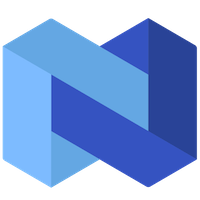 Nexo – it is a platform created on the basis of the Ethereum blockchain for granting instant loans, secured by cryptocurrency deposits of the borrower, thanks to which we do not have to sell our cryptocurrencies when we need capital. The Nexo platform was created in February 2018 as a separate project of the European corporation Credissimo – dealing with new technologies in the field of finance, and specifically the implementation of loans. As NEXO is called Security Token – this usually means that we will receive a dividend. In the case of traditional stocks – we usually receive dividends at the end of the year.
Nexo – it is a platform created on the basis of the Ethereum blockchain for granting instant loans, secured by cryptocurrency deposits of the borrower, thanks to which we do not have to sell our cryptocurrencies when we need capital. The Nexo platform was created in February 2018 as a separate project of the European corporation Credissimo – dealing with new technologies in the field of finance, and specifically the implementation of loans. As NEXO is called Security Token – this usually means that we will receive a dividend. In the case of traditional stocks – we usually receive dividends at the end of the year.
Price: $2.67
Market cap: $1 497 761 099
47. ICON (ICX)
![]() ICON blockchain technology is used in the real world such as banks, investment firms, hospitals, and universities. ICON connects the world of cryptography and reality. ICON is scalable not only in relation to public blockchains (e.g. Bitcoin, Ethereum), but also in private networks and other blockchains.ICON is not limited to the real world, but directly connects and communicates with the cryptographic world, creating the most reliable network with no scalability limits. The ICON project aims to build a decentralized network that enables the independent management of blockchains to be able to make transactions with each other without intermediaries.
ICON blockchain technology is used in the real world such as banks, investment firms, hospitals, and universities. ICON connects the world of cryptography and reality. ICON is scalable not only in relation to public blockchains (e.g. Bitcoin, Ethereum), but also in private networks and other blockchains.ICON is not limited to the real world, but directly connects and communicates with the cryptographic world, creating the most reliable network with no scalability limits. The ICON project aims to build a decentralized network that enables the independent management of blockchains to be able to make transactions with each other without intermediaries.
Price: $2.94
Market cap: $1 390 851 835
48. Ravencoin (RVN)
 Ravencoin (RVN) is a decentralized, open-source platform based on blockchain technology with its own, native RVN cryptocurrency, aimed at easy and cheap creation of digital assets, including tokenization of physical objects such as works of art. Ravencoin is a network based on the Proof of Work consensus algorithm, which means that miners are responsible for the continuity and stability of the network, who confirm transactions, create new transaction blocks and mine new cryptocurrency units.
Ravencoin (RVN) is a decentralized, open-source platform based on blockchain technology with its own, native RVN cryptocurrency, aimed at easy and cheap creation of digital assets, including tokenization of physical objects such as works of art. Ravencoin is a network based on the Proof of Work consensus algorithm, which means that miners are responsible for the continuity and stability of the network, who confirm transactions, create new transaction blocks and mine new cryptocurrency units.
Price: $0.19
Market cap: $1 384 863 544
49. Avalanche (AVAX)
 Avalanche is an open source platform for running decentralized financial applications and enterprise blockchain deployments in a single, highly scalable ecosystem. AVAX is a native Avalanche token. It is a limited, rare resource that is used to pay fees, secure the platform through staking, and provide a basic unit of account between the multiple subnets set up in Avalanche.
Avalanche is an open source platform for running decentralized financial applications and enterprise blockchain deployments in a single, highly scalable ecosystem. AVAX is a native Avalanche token. It is a limited, rare resource that is used to pay fees, secure the platform through staking, and provide a basic unit of account between the multiple subnets set up in Avalanche.
Price: $0.36
Market cap: $688 667 286
50. Lisk (LSK)
 The Lisk cryptocurrency is undoubtedly one of the most innovative altcoins in the world. In the foreign Internet, you can even find claims that with its creation, a “new era” in the history of alternative currencies has begun. A qualified team of several dozen developers is responsible for work on development. There are also Polish programmers in this group. This is one of the most important platforms that allow you to create and earn on proprietary applications. The beginnings date back to 2016, when Max Kordek, in cooperation with Oliver Beddows, decided to create a separate and independent project based on blockchain technology. The Lisk cryptocurrency, or in fact its first version, was created on the basis of the Crypti language, which is no longer being developed. Currently, it is based on its own programming solutions.
The Lisk cryptocurrency is undoubtedly one of the most innovative altcoins in the world. In the foreign Internet, you can even find claims that with its creation, a “new era” in the history of alternative currencies has begun. A qualified team of several dozen developers is responsible for work on development. There are also Polish programmers in this group. This is one of the most important platforms that allow you to create and earn on proprietary applications. The beginnings date back to 2016, when Max Kordek, in cooperation with Oliver Beddows, decided to create a separate and independent project based on blockchain technology. The Lisk cryptocurrency, or in fact its first version, was created on the basis of the Crypti language, which is no longer being developed. Currently, it is based on its own programming solutions.
Price: $5.81
Market cap: $741 610 247
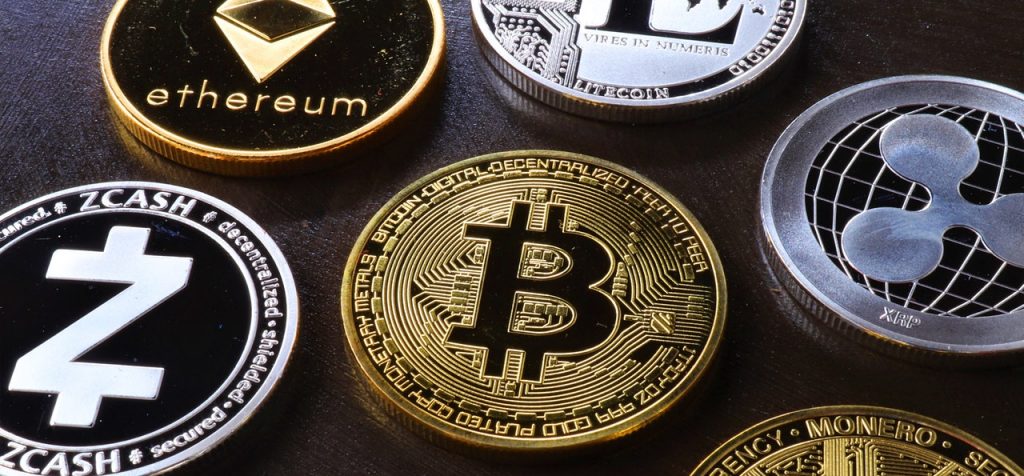 Cryptocurrencies are a market with great prospects.
Cryptocurrencies are a market with great prospects.
Many people take their first investment steps on exchanges that operate Bitcoin and other virtual coins. A lot of altcoins are just an attempt to recreate Bitcoin’s success – usually quite unsuccessful. Only a small fraction offers value to investors; some, in turn, were created as a medium of exchange rather than as a means of increasing capital. Among the more than five thousand alternative coins, however, there are altcoins that deserve attention. The ranking includes several important alternative currencies that should attract the attention of investors and fans of this type of technology in 2021. These are coins that have a very interesting structure and offer various possibilities, which makes their prospects very interesting.